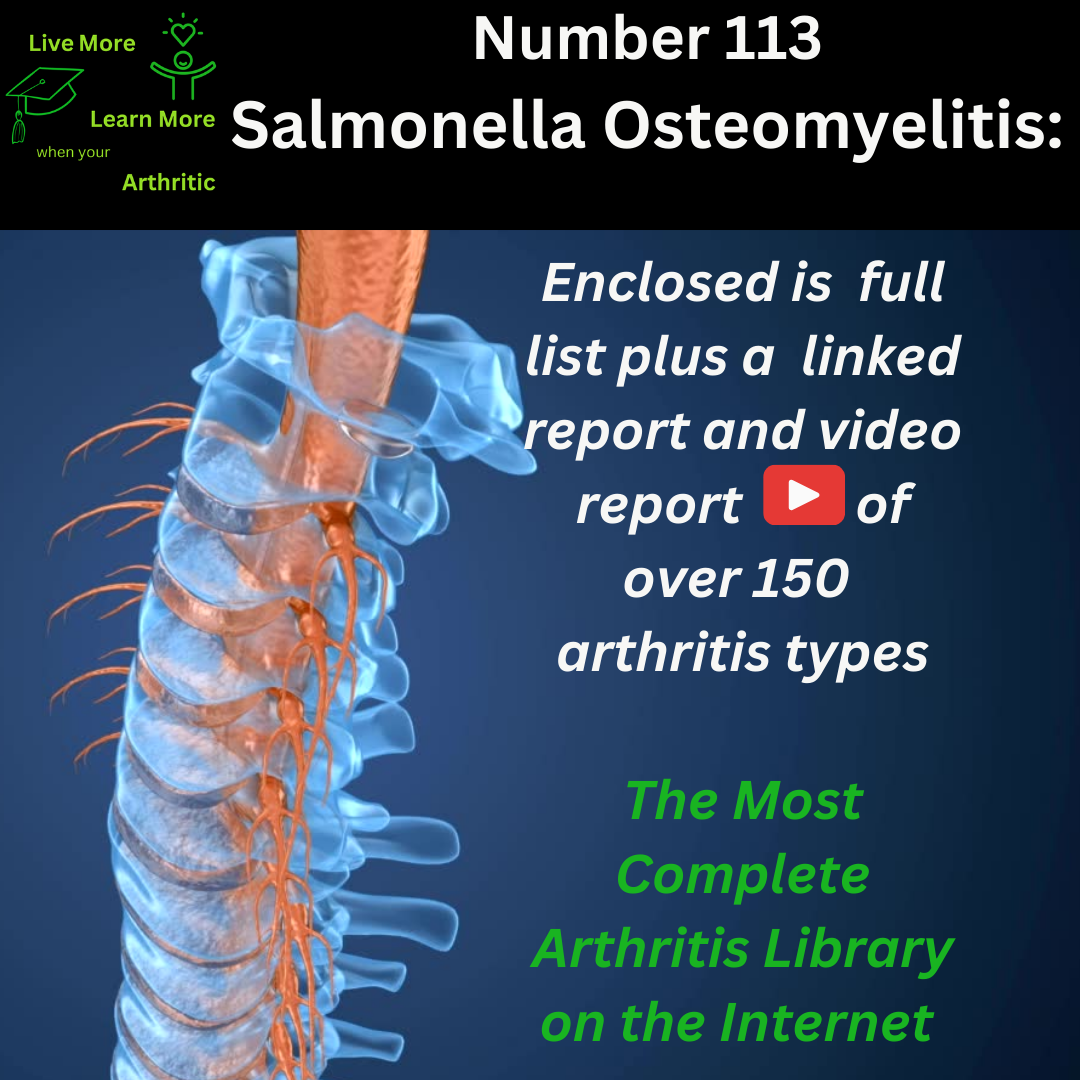
Salmonella Osteomyelitis: Number 113 of around 150 types of Arthritis
Exploring Salmonella Osteomyelitis
Salmonella osteomyelitis is a rare but serious infection of the bone caused by Salmonella bacteria. Let’s delve into the details of this condition, including its impact on the body, potential complications, and proactive management strategies.
Salmonella osteomyelitis primarily affects the long bones, such as the femur (thigh bone) and tibia (shin bone), as well as the vertebrae of the spine. Symptoms may include localized bone pain, swelling, redness, and tenderness at the site of infection. Limited range of motion and difficulty bearing weight on the affected limb can occur due to pain and inflammation.
Causes and Triggers
Salmonella bacteria typically enter the body through contaminated food or water, leading to gastrointestinal infection (salmonellosis). In some cases, the bacteria can spread through the bloodstream (bacteremia) and reach the bones, causing osteomyelitis. Immunocompromised individuals, young children, and the elderly are more susceptible to developing Salmonella osteomyelitis.
Onset and Risk Factors
Salmonella osteomyelitis can occur at any age but is more common in children under five years old and individuals with weakened immune systems. Both men and women can be affected by Salmonella osteomyelitis, although specific risk factors such as underlying medical conditions (like diabetes or HIV/AIDS) and recent Salmonella infection increase susceptibility to developing this complication.
Inflammation and Complications
Inflammation plays a critical role in Salmonella osteomyelitis, leading to bone destruction and potential abscess formation within the affected bone. Complications can include chronic bone infections, septicemia (bloodstream infection), joint destruction, and systemic complications if the infection spreads to other organs.
Quality of Life and Proactive Management
Achieving a higher quality of life with Salmonella osteomyelitis requires a proactive approach involving prompt diagnosis, appropriate antibiotic therapy, and surgical intervention if necessary to remove infected bone tissue or drain abscesses. Rehabilitation and physical therapy can help restore mobility and function in affected limbs, minimizing long-term disability and improving overall well-being.
 Possible Complications and Interconnected Conditions
Possible Complications and Interconnected Conditions
Complications of Salmonella osteomyelitis may include chronic pain, joint stiffness, limb deformities, and recurrent infections. In severe cases, persistent infection and bone destruction can lead to lifelong disability and impact lifespan, particularly in vulnerable populations with compromised immune systems. Close monitoring for recurrence of Salmonella infection and associated conditions is essential to prevent future complications and optimize health outcomes.
In summary, Salmonella osteomyelitis is a challenging condition that requires comprehensive management to minimize complications and improve quality of life. By addressing inflammation, treating underlying infections, and promoting bone healing through appropriate medical interventions and rehabilitation, individuals affected by Salmonella osteomyelitis can achieve better outcomes and maintain functional independence. Early intervention and ongoing care are essential for optimizing recovery and preventing long-term sequelae associated with this rare bone infection.


